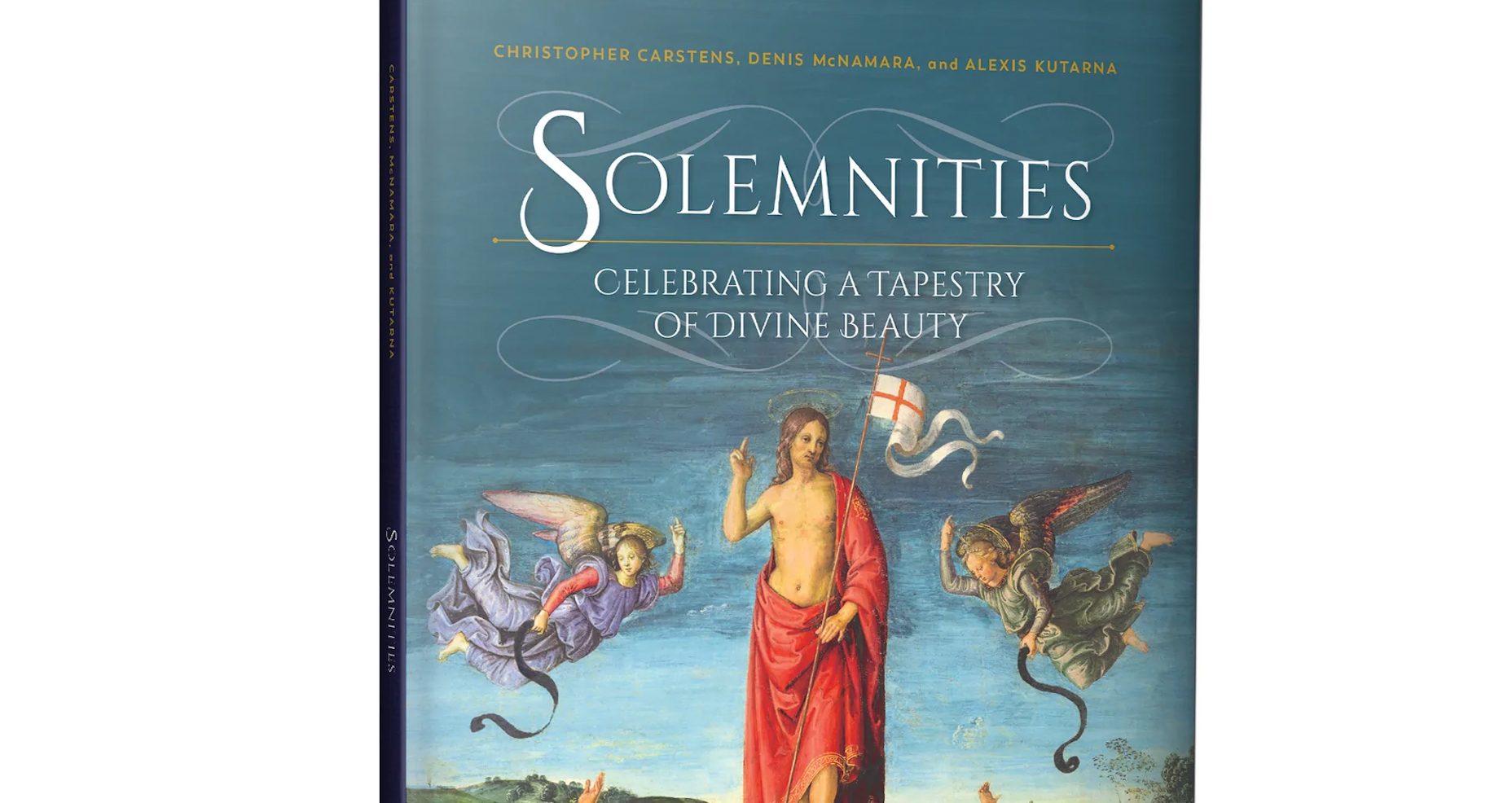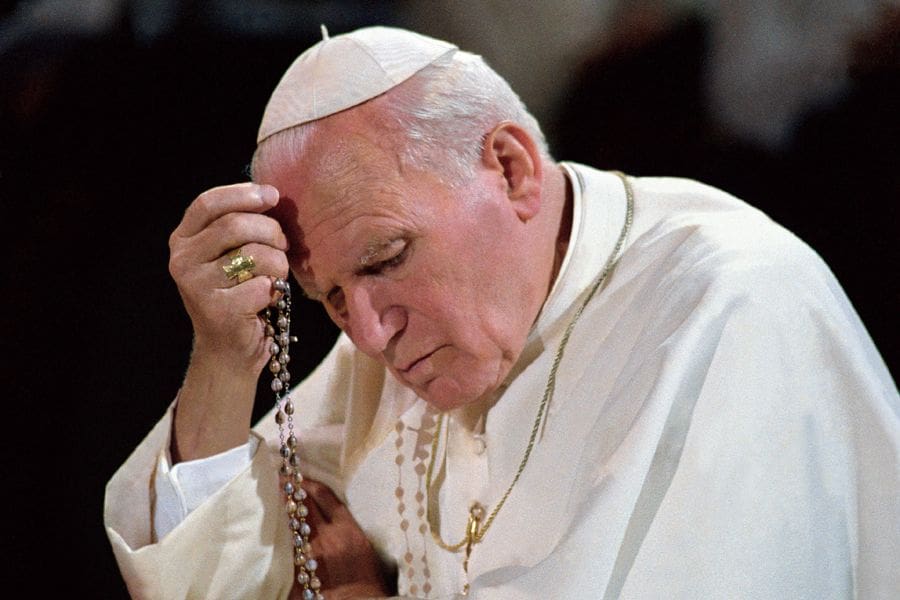The liturgical celebrations of the Church reach back to her earliest days—and have their roots in the liturgical life of the Old Testament. When Catholics attend the liturgy, they are drawn up into eternity, and the mysteries of salvation history are made present to the faithful in the celebration, where we pray before the throne of God in communion with all the saints and angels from across time.
Many engaged Catholics may not explicitly know this about the Church’s prayer life, but they instinctively know it at some level and certainly desire such a spiritual connection with the past. The popularity of Ascension’s The Great Adventure series of Scripture studies, The Great Adventure Catholic Bible, and the Bible in a Year (with Fr. Mike Schmitz) podcast have shown, time and again, that Catholics who take their faith seriously seek out that connectivity. The approach of these catechetical tools is one that draws Catholics into the story—salvation history is their story. The actions of God in our world are not consigned to thousands of years ago, to people halfway around the world, but God’s activity continues to be present in the lives of believers every day. God’s actions, as recorded in the Scriptures and the annals of Church history, do not only belong to the ages of the past—they belong to the Church in every age. They witness to us. The people of God become our people. The family of God becomes our family. This vibrancy feeds the lives of Catholics across the world.
God’s actions, as recorded in the Scriptures and the annals of Church history, do not only belong to the ages of the past—they belong to the Church in every age.
This concern for connecting the prayer life of Catholics with the greater Church is part of what fed Ascension’s decision to commission Solemnities: Celebrating a Tapestry of Divine Beauty. The Solemnities are the greatest feasts in the life of the Church wherein we celebrate God’s saving actions in history through his revealed truths and the lives and witness of those who have gone before us in faith. In celebrating the Solemnities, Catholics are present to many of the Church’s most profound mysteries and connect the Church today with the people and events of the past. The uptick in interest in liturgical living seen in recent years indicates this desire to find some further way to connect with the past, to stay close to those important events and people that have made up our Catholic patrimony and family.
Of course, the primary way to enter into these mysteries is through active participation in the liturgy. A natural outgrowth of this active participation is indeed liturgical living. Our Faith needs to be practiced for more than simply an hour on Sunday—it must be integrated into our very lives. In this way, we can better learn how to fast and feast with the Church.
To help Catholics better access these mysteries of the Solemnities, Ascension set out to produce a book that would do three very important things: (1) explain what is being celebrated, (2) facilitate authentic prayerfulness conducive to each Solemnity, and (3) suggest how the Solemnity might be celebrated in deeply rooted ways beyond attending Mass or praying the Hours.
To ensure a truly enriching resource, we reached out to Jesse Weiler, then director of The Liturgical Institute at the University of St. Mary of the Lake, Mundelein, IL. Weiler connected Ascension with the three authors: Chris Carstens, Alexis Kutarna, and Denis McNamara. Ascension’s editors divided up the treatment of the Solemnities into three articles for each of the 17 Solemnities of the Roman Rite, corresponding respectively to the three above-stated goals. The result was a beautiful and inspiring volume that will bless the lives of Catholics for years to come.
The first goal—explaining each Solemnity—was achieved with an entry describing the biblical or historical genesis of the Solemnity or its celebration, tying the reader to the richness of Catholic tradition. The liturgical and spiritual background of the particular Solemnity is also addressed in the first article for each Solemnity, giving the reader a well-rounded understanding of the celebration. This article was authored by Carstens, who, in addition to being the editor of Adoremus Bulletin, is the director of the Office for Sacred Worship in the Diocese of La Crosse, WI, and a visiting faculty member of the Liturgical Institute.
The uptick in interest in liturgical living seen in recent years indicates this desire to find some further way to connect with the past, to stay close to those important events and people that have made up our Catholic patrimony and family.
Beauty was an important factor when creating this book so that the glory of the subject being celebrated could worthily be expressed. Therefore, to achieve the second goal of facilitating prayerfulness, Ascension strove to incorporate beautiful sacred artwork from as early as the 13th century up to our current 21st century. Pieces from both Eastern and Western traditions were selected. Each image is displayed in a full-page spread (a sizable 9×10.5”) alongside commentary on the image on the accompanying page. The understanding behind the symbolism in these pieces of art will support prayerful meditation upon the mysteries depicted therein. McNamara, executive director of the Center for Beauty and Culture at Benedictine College, Atchison, KS, was a natural fit to author this section with his background as an expert in sacred architecture, with a PhD in architectural history, and extensive experience speaking about beauty, culture, and the liturgy.
The third section containing suggestions of how the Solemnity might be celebrated is critically steeped in Catholic culture and history. Rather than generate new ways to celebrate the Solemnities, Ascension endeavored to draw the reader into the history of these celebrations so that they can have that sense of connectivity to what is being celebrated. This section describes how the Church has celebrated the Solemnity in history as well as what has been done in various cultures around the world. Then it suggests how those ancient or traditional celebrations might be applied in a family or community. This often includes an associated prayer or hymn. The observation of the Solemnity by the faithful is enriched by a more robust celebration steeped in the rich history of the Church. The extensive research and writing for these articles was completed by Kutarna, a PhD candidate in liturgical studies and a musician whose career has featured extensive practical experience in sacred music ministry.
The work of these three authors has been woven together into a beautiful and inspiring book. Solemnities: Celebrating a Tapestry of Divine Beauty is available at AscensionPress.com/Solemnities.
Rick Dooley is a Product Manager at Ascension. Prior to his work at Ascension, Rick served the Diocese of Allentown, PA, as Director of Adult Catechesis and Formation and earned a Master’s degree in Theology from the Augustine Institute.


